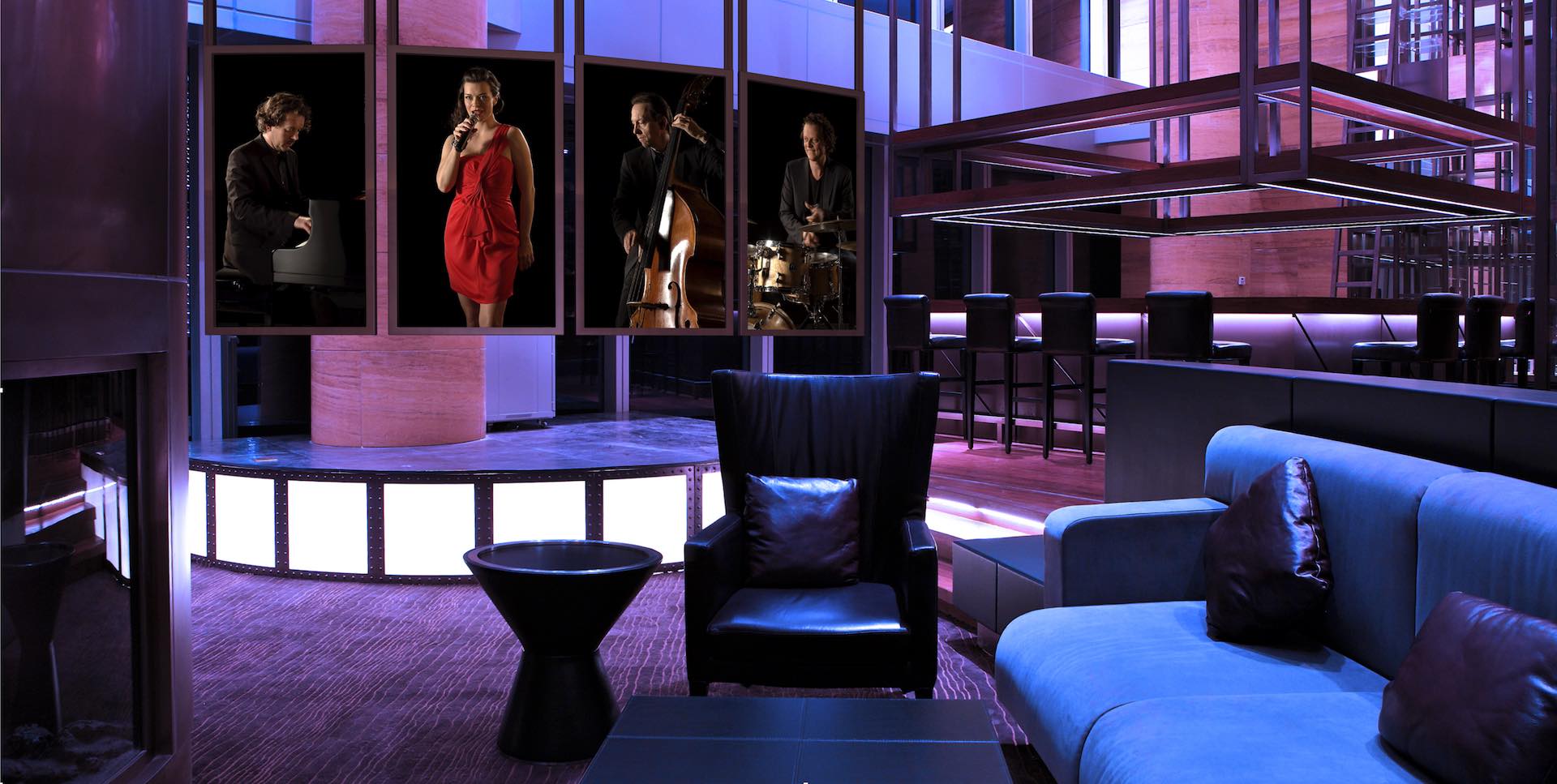Table of Contents
1. System set-up – atmosphere 4K multiscreen installation
a. Connecting the displays
b. Displays arrangement
1. Setting up the control monitor
2. Arranging the four display screens
3. Reading and saving EDIDs to secure screens arrangement
2. System set-up – atmosphere UHD single screen installation
a. Connecting the UHD display
b. Displays resolution settings
1. System Set-Up – atmosphere 4K multiscreen installation
a. Connecting the displays
All displays must be connected to the right ports and busses of the Mac Pro. It is very important to connect the displays to the right thunderbolt busses (see figure below). Do not attach more than two displays to any bus. The HDMI port (Control Monitor) is part of Bus 0.
The 4 display screens must be connected to the Thunderbolt Ports 1, 2, 4 and 6 using active Mini Display Ports to
HDMI or DVI adapters (see hardware requirements). The Thunderbolt Content Drive should be connected to Port 3/Bus 1.

b. Displays arrangement
The atmosphere media player© uses the internal OS X display arrangement under System Preferences.
Go to the Mac Pro System Preferences in the Doc
Select / Displays / Arrangement
Note: make sure that the atmosphere media player© is not running while doing screen arrangement.
1. Setting up the control monitor:
We assume that you can see all 5 screens while doing the screen arrangement. If this is not the case, it is possible to do the desktop configuration using a remote desktop connection to the Mac from a laptop or other computer where a view of the 4K
wall is possible. Screen Sharing can be enabled on the mac and then a connection can be made using any VNC client, such as:
/System/Library/CoreServices/Applications/Screen Sharing.app on a Mac or UltraVNC on Windows. Alternatively, an application like TeamViewer could be installed on the Mac enabling connection from another computer with TeamViewer installed.
When starting the Mac Pro with all 5 screens connected, all screens will be shown next to each other in landscape format in the screen arrangement window.
The desktop must be constructed from left to right with the Control monitor far left.
– Click on each screen to locate the control monitor, grab it with the mouse and move it totally to the left.
(when clicking on a screen a red border appears and helps locate the selected display, you can swap screens with the mouse)
– Grab the Doc (white bar) with the mouse and move it to the control monitor. The main menu is now on your control monitor.

2. Arranging the four display screens
The final desktop arrangement must be as follow:
– Control monitor (menu screen) 0 rotation
– 4 display screens at 90° rotation in order matching that of the 4K video wall

For convenience the delivered MovieUpdater app can rotate the display screens to 90 degrees.
open the MovieUpdater app
select Desktop/90 Degree and Apply
The 4 main screens are now rotated to 90° in portrait format.

You can also rotate each screen manually in the Apple System Preferences
go to system preferences/Displays
– select Rotation 90° Degree
– Confirm the changes

Swapping displays: after rotating screens, the four display screens might not be in the right order. The final position should be 1 to 4 from left to right. Please rearrange the screens into the correct order.

The final position of the screens should be as follow

Verifying the display screen arrangement:
Open the atmosphere media player and select (under Library) the test video to verify the screen arrangement.
This test video also serves to configure the physical aspects (formats, Color settings, etc..) of the displays.

3. Reading and saving EDIDs to secure screens arrangement
We recommend the usage of EDID managers for media installation. These Managers simulate a constant connected display for the Mac Pro and make it the ideal solution to prevent video loss and screen arrangement errors if displays are disconnected for any reason. Sometime the screen configuration is lost when OS X reboots.
The atmosphere media player© comes with two smalls apps to rectify this situation:
AMPDisplayConfig.app Manually launch and save the desktop configuration (EDID to screen mapping).
AMPDisplayRun.app Apply the saved screen configuration by running this app from the User’s login items.
How to run atmosphere media player© Display Configuration:
(Display screens and control monitor must have been priorly arranged in the right order)
1. Put AMPDisplayConfig and AMPDisplayConfigRun into /Applications.
2. Launch AMPDisplayConfig.
3. Click ‘Capture Desktop’.
4. Add /Applications/AMPDisplayConfigRun as a login startup item. It should run as the first item.

2. System Set-Up – atmosphere UHD single screen installation
a. Connecting the UHD display

*The Audio Output is for an external sound system, when using the internal display speakers, the audio will be sent with the video signal out of the HDMI output.
b. Display resolution settings
When connecting the UHD display to the HDMI output of the Mac Mini, you have to make sure that the display resolution is set correctly under System Preferences:
– Go to the Mac Mini System Preferences in the Doc
– Select / Displays
– Select the UHD native display resolution 3840×2160 pix (30 Hertz)

3. Support Contact
Email: support(at)atmosphere-media.com
Tel.: +49 221 960 25 494
Drop us a line:
